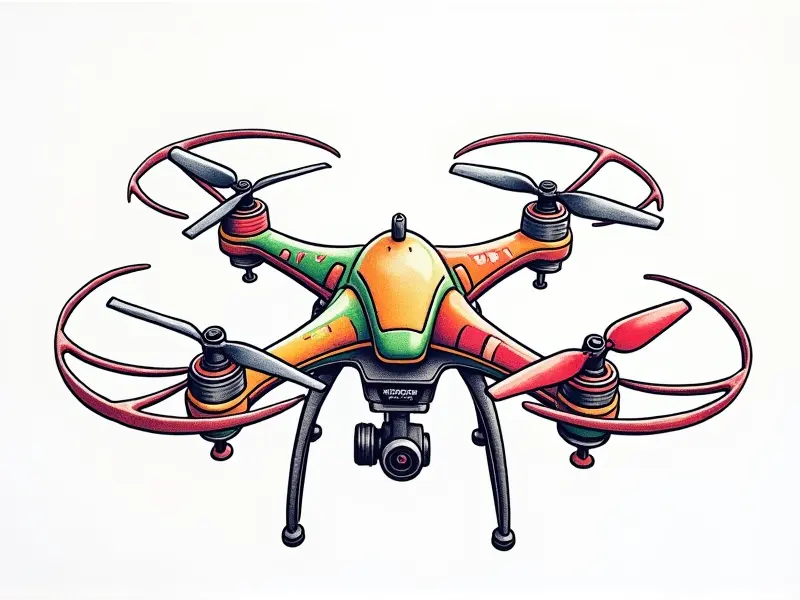Drone frame materials

Drone Frame Materials: A Comprehensive Guide
In the rapidly evolving world of drones, selecting the right frame material is crucial for achieving optimal performance. The choice between carbon fiber, plastic, aluminum, and other materials can significantly impact flight time, durability, weight, and cost-effectiveness. This article delves into each aspect to help you make an informed decision.
Best Drone Frame Materials Explained
The primary drone frame materials include carbon fiber, plastic, aluminum, and advanced composites. Each material has unique properties that cater to different needs:
- Carbon Fiber: Known for its high strength-to-weight ratio.
- Plastic: Economical and easy to manufacture.
- Aluminum: Durable with good thermal properties.
- Advanced Composites: Combines the benefits of multiple materials for superior performance.
Carbon Fiber vs. Plastic Frames
When comparing carbon fiber and plastic frames, several factors come into play:
Strength and Durability
- Carbon Fiber: Offers exceptional strength and durability.
- Plastic: Less durable but more forgiving in minor impacts.
Weight
Carbon fiber is significantly lighter than plastic, contributing to better flight performance.
Cost
- Carbon Fiber: Expensive due to manufacturing processes and material cost.
- Plastic: More budget-friendly but may require frequent replacements.
Aluminum Drone Frames: Pros & Cons
Aluminum frames offer a balance between durability and weight, making them popular among drone enthusiasts. Here are some pros and cons:
Pros
- Durability: Resistant to wear and tear.
- Thermal Stability: Performs well in varying temperatures.
- Affordability: More cost-effective than carbon fiber.
Cons
- Weight: Heavier compared to carbon fiber, affecting flight time.
- Mechanical Fatigue: Prone to fatigue over extended use.
Lightweight vs Durable Drone Frames
The choice between lightweight and durable frames depends on your specific needs:
Lightweight Frames
- Better Flight Time: Increased payload capacity and longer flight duration.
- Easier to Carry: More portable for travel and field operations.
Durable Frames
- Long-Term Use: Resistant to wear, reducing maintenance costs.
- Better Impact Resistance: Can withstand harsher conditions without damage.
Impact of Material on Flight Time
The material of the drone frame directly affects flight time due to its weight and thermal properties. Lighter materials like carbon fiber allow for longer flights, while heavier metals may reduce performance:
- Carbon Fiber: Optimal balance between strength and weight.
- Aluminum: Slightly heavier but still performs well in terms of flight time.
Budget-Friendly Drone Frame Options
If cost is a significant factor, consider the following budget-friendly options:
- Plastic Frames: Economical and widely available.
- Aluminum Frames: More durable than plastic but still affordable.
Advanced Composite Drone Frames
Advanced composite materials combine the best properties of multiple materials, such as carbon fiber reinforced with Kevlar or fiberglass. These composites offer superior strength and durability at a competitive weight:
- Multilayer Composites: Enhanced resistance to impact and fatigue.
- Nanocomposites: Incorporating nanomaterials for improved performance.
Durability in Different Weather Conditions
The choice of material can significantly affect a drone's performance in various weather conditions:
- Carbon Fiber: Resistant to temperature changes and moisture.
- Aluminum: Performs well in cold temperatures but may expand in heat.
Lightweight Materials for Quadcopters
Quadcopter drones often require lightweight materials to maximize flight time. Popular choices include:
- Titanium Alloys: Lightweight yet extremely strong.
- Glass Fiber Reinforced Polymers (GFRP): Combines the benefits of glass fiber and resin for lightweight strength.
Eco-Friendly Drone Frame Solutions
As environmental concerns grow, eco-friendly materials are gaining traction in drone manufacturing:
- Bio-Based Polymers: Derived from renewable resources like corn starch or sugarcane.
- Recycled Materials: Utilizing recycled plastics and metals to reduce waste.
Choosing the Right Drone Material
Selecting the right drone frame material involves considering factors such as intended use, budget constraints, and environmental conditions. Here are some tips for making an informed decision:
- Assess Your Needs: Determine whether flight time or durability is more critical.
- Budget Constraints: Consider the long-term costs versus initial investment.
- Environmental Conditions: Choose materials that perform well in your operating environment.
Conclusion
The choice of drone frame material is a critical decision that impacts performance, durability, and cost. By understanding the properties and benefits of different materials, you can select the best option for your specific needs. Whether you prioritize lightweight carbon fiber or durable aluminum, there's a material out there to meet your requirements.

